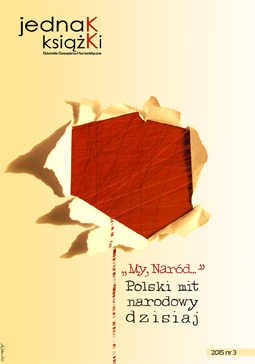Fabryka Schindlera - tektonika dyskursów
Słowa kluczowe:
semantics of historical time, contemporary historical culture, discourse of a museum’s exhibition, historical imagination, aesthetics of a melancholyAbstrakt
The author of the article discusses the museum institution which is Oskar Schindler’s Enamel Factory, a branch of the Historical Museum of the City of Kraków. The subject of the analysis is a permanent exhibition – Kraków under Nazi Occupation 1939–1945. The reading of the exhibition space starts from the premise that modern museums are mirrors which reflect the contemporary historical culture, with the appropriate symbols, myths and desires. The author interprets the exhibition, treating it as a discourse, a mixture of a variety of narrative – academic and pop cultural, theater and multimedia. The analysis also includes the characteristic phenomenon of postmodern thinking about the past, such as post-nostalgia, privatisation of the past, melancholy, irony or desire for presentification.
Downloads
Bibliografia
Arnold-de Simine S., Mediating Memory in the Museum: Trauma, Empathy, Nostalgia, Basingstoke–New York 2013.
Bal M., Dyskurs muzeum, przeł. M. Nitka, [w:] Muzeum sztuki. Antologia, pod red. M. Popczyk, Kraków 2005, s. 353- 355.
Bourdieu P., Photography: A Middle-brow Art, Stanford 1996.
Buryła S., Topika Holocaustu. Wstępne rozpoznanie, „Świat Tekstów. Rocznik Słupski” 2012, nr 9, s. 132–133.
Gumbrecht H.-U., Gdy przestaliśmy uczyć się od historii, przeł. M. Zapędowska, [w:] Pamięć, etyka i historia. Anglo-amerykańska teoria historiografii lat dziewięćdziesiątych (Antologia przekładów), pod red. E. Domańskiej, Poznań 2006, s. 204-205.
Gumbrecht H.-U., In 1926. Living at the Edge of Time, Cambridge Mass. 1997.
Gumbrecht H.-U., Użyteczność historii (uobecnienie i odkupienie), przeł. E. Domańska, [w:] Pamięć, etyka i historia. Anglo-amerykańska teoria historiografii lat dziewięćdziesiątych (Antologia przekładów), pod red. E. Domańskiej, Poznań 2006, s. 123.
Hirsch M., Family Frames: Photography, Narrative, and Postmemory, Harvard 1997.
Jameson J., Postmodernism, or, The Cultural Logic of Late Capitalism, Durham 1991.
Koselleck R.R., Semantyka historyczna, wyb. i oprac. H. Orłowski, Poznań 2001.
Link-Lenczowska M., Śmierć w nowych dekoracjach, „Herito” 2010, nr 1, s. 109-115.
Rewers E., Ekran miejski, [w:] Pisanie miasta – czytanie miasta, red. A. Zeidler-Janiszewska, Poznań 1997, s. 45.
Widzicka M., Semantyka historyczna w ujęciu Reinharta Kosselecka. Zarys problematyki, „Historyka” 2010, t. XL, s. 50.
www.mhk.pl/wystawy/krakow-czas-okupacji-1939-1945 [dostęp 11.07.2014].

 Uniwersyteckie Czasopisma Naukowe
Uniwersyteckie Czasopisma Naukowe




